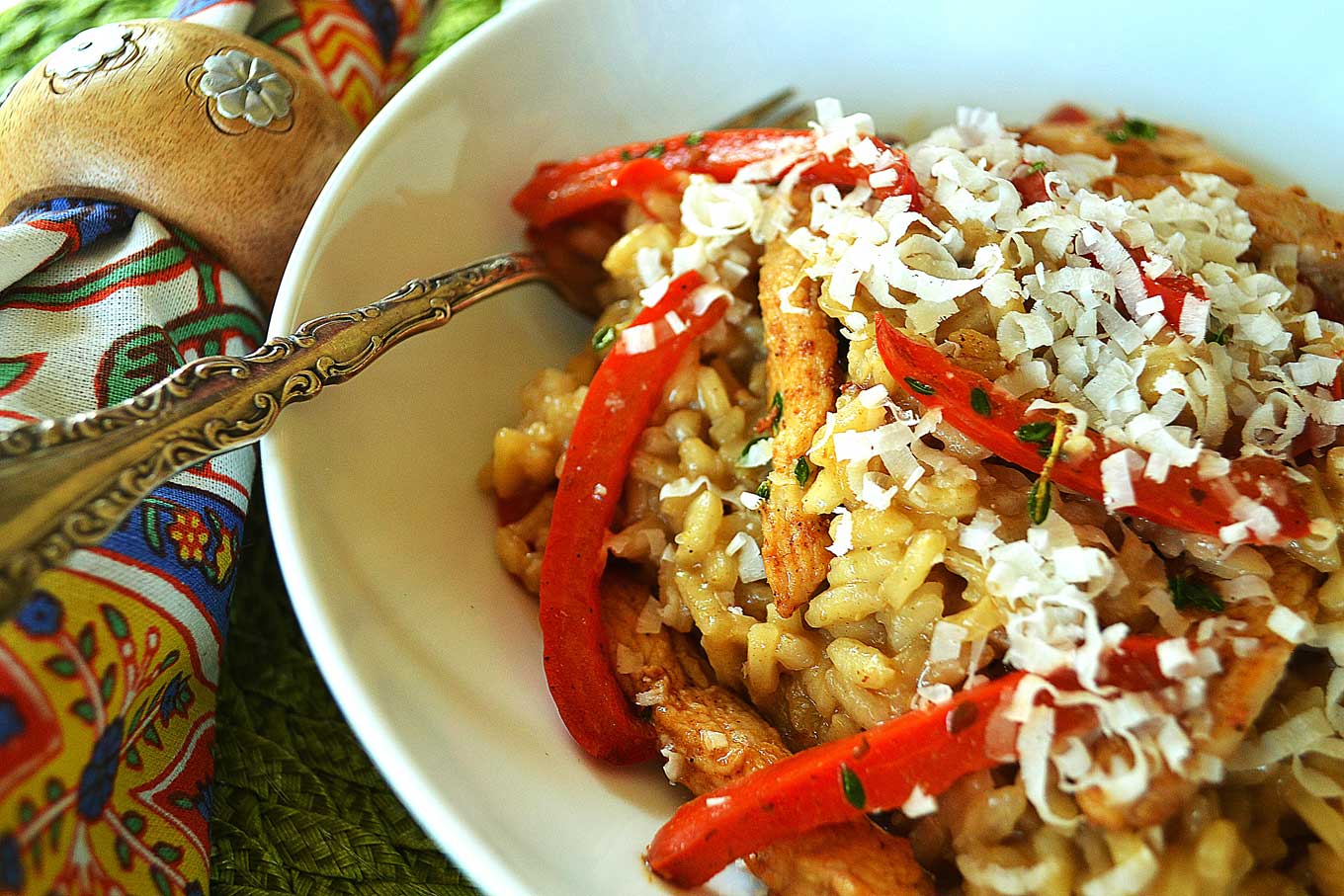
Some foods exist as gentle reminders that it is usually best not to ‘wing it’ in life. A risotto, an Italian rice dish cooked in a savory broth to a creamy consistency, is a perfect case in point. It has a way of keeping us on our toes by demanding all of our attention. It would fit in marvelously in some Hollywood circles, where it can blend in among the other petulant prima donnas.
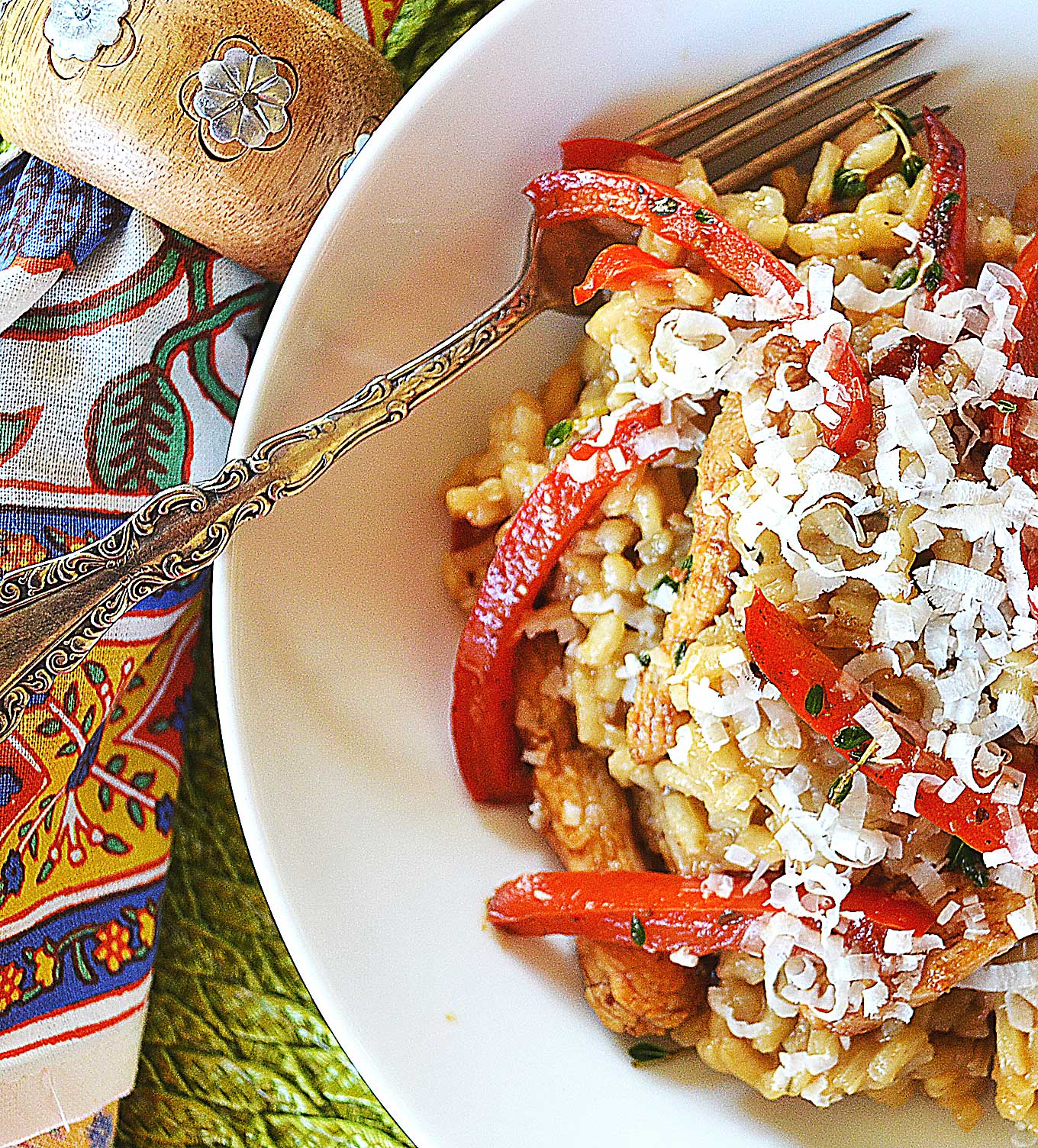
Pastas, roasts and stir fries, unlike our pesky friend, offer us some flexibility at the stove. They tolerate being taken off the flame for a minute or two while we attend to more pressing matters, like letting our nervously shuffling dog into the backyard. Or, infinitely more satisfying, they allow us a time out to make ourselves a perfectly chilled mojito. With these dishes, we can often chop as we go, adding things as we dice and slice them, and it somehow all works out. Everything comes out tasty.
But risotto waits for no one. It is the proverbial school bus that slams its doors shut and barrels down the street, even as it sees us frantically running after it, with a half-open backpack spewing pencils and those scribbled-on pieces of paper otherwise known as homework.
When it comes to risotto, we need to be prepared. And if we are not, we pay the price.
Perennially testy, it makes demands and get ornery if they are not met. For instance, it sticks to the pan if it doesn’t get the liquid it needs. Or if we don’t stir it enough as it cooks. Or if we don’t sing it “That’s Amore” in the key of G. All this means we can’t stray too far from the stove.
Also, if we don’t toast the rice just so in some oil or butter before adding the broth, it retaliates by not absorbing the liquid slowly, consequently becoming thick and pasty instead of velvety and decadent. Oh, and if the broth we are adding isn’t hot enough, it rebels by turning to mush, which is also what we’ll get if we wait too long to serve it once cooked. All this means we need to be fairly precise in how we make it and how quickly we serve it.
It’s downright insufferable. For the 18 minutes or so it takes to prepare, anyway.
And yet, here we are. Many of us continue to love risotto just the same, knowing that if we are to indulge in its ultimate creamy deliciousness, we also need to indulge its inflexible nature.
Mostly, this translates to having all the ingredients you will need washed, chopped, diced, minced and sautéed before firing up the stove. Stopping virtually every other facet of our lives is also key. So plan on showing the beloved family pet the backyard door and making that coveted drink ahead of time. Finally, and this almost goes without saying, plunk the children in front of some amusing, educational show unless you, like my friend Danielle, have a child that can play with blocks for 3-hour stretches at a time. I have not spawned such a child myself.
If we are willing to do all that, for just 18 minutes!, then we too can indulge in one of the most satisfying of culinary treats. Sure, we’ve paid a price, but tell that to our palate as it savors each kernel of rice, cooked to chewy perfection and coated with a sumptuous and rich creamy sauce offering hints of caramelized chicken, smoky red pepper, earthy thyme and nutty Parmigiano-Reggiano.
Prima donnas are prima donnas for a reason.
Intrigued by this rather high maintenance dish? Check out this great article by Fine Cooking, which offers great insight on how to find the right kind of rice for your risotto. My personal favorite is Carnaroli. I find that it stays firmer and holds a better texture during the cooking process. It’s my go to.
making risotto with chicken, thyme & red pepper
Warm 7 cups of chicken broth in a large glass Pyrex measuring cup in the microwave (or in a medium pot on the stove). Cut ¾ – 1 lb. of chicken breast into thin strips. Wash and slice 1 red bell pepper in half. Remove the stem and the seeded inside by making a v-shape slice around it and then removing it with your hands. Now cute the pepper halves into quarters. Remove any leftover seeds and any white membranes within the pepper, which is bitter, and then slice into slivers.
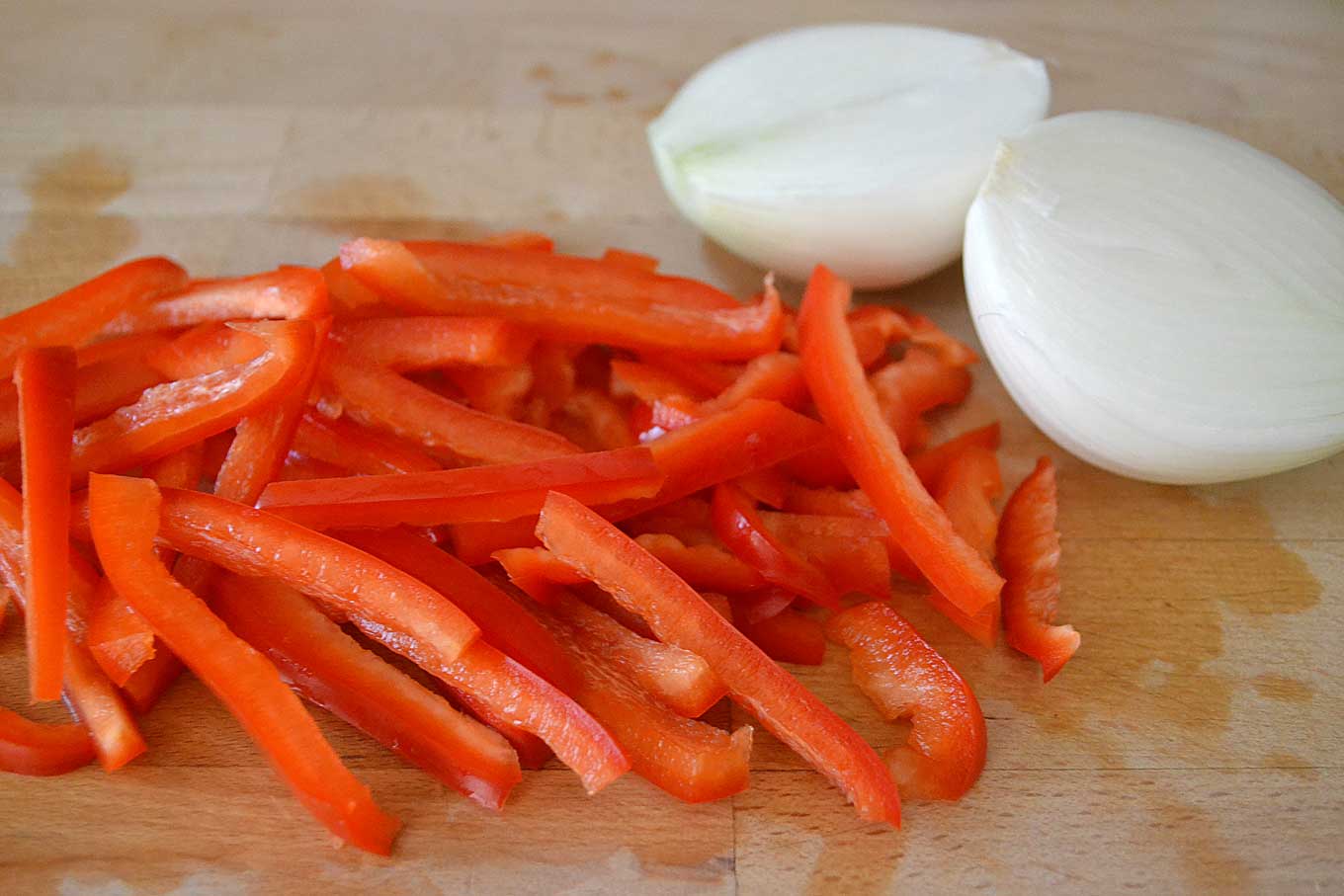
In a large, shallow heavy-bottomed pot or dutch oven, heat 2 tablespoons of unsalted butter on medium flame. As butter is melting, blot the chicken pieces with paper towels to remove as much surface moisture as possible (doing this will help them brown better). Once butter starts to bubble, add a sprinkling of salt to half the chicken strips and add to the pan.
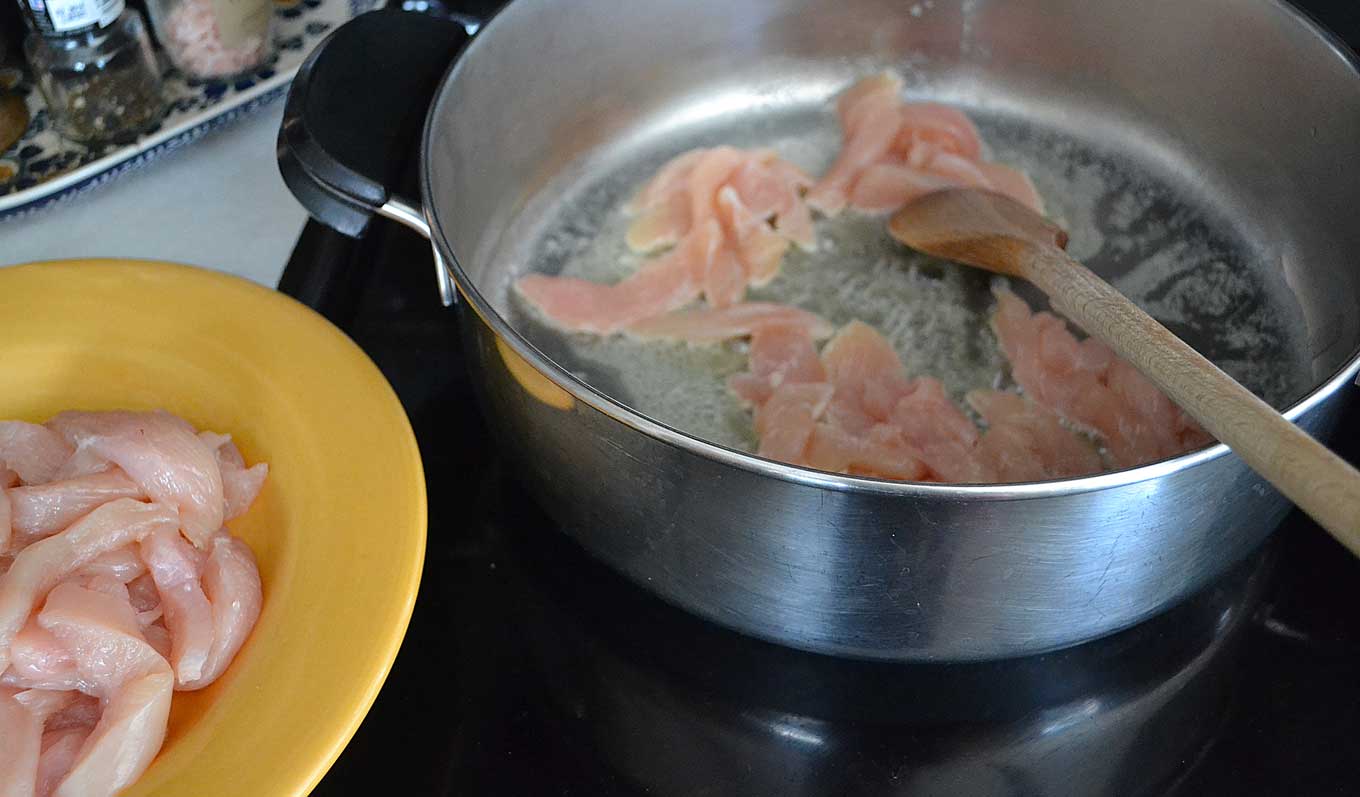
Once you add the meat, turn up the flame to high. You want to do this because it allows the chicken to cook quickly without drying out and also allows the outside to start browning. For this to happen, make sure the sizzle coming from the pan is “allegro” or lively.
Cook for a minute or two and then add sea or Kosher salt and fresh-cracked pepper to taste and a 1/2 tablespoon of chopped thyme and mix for a few second.
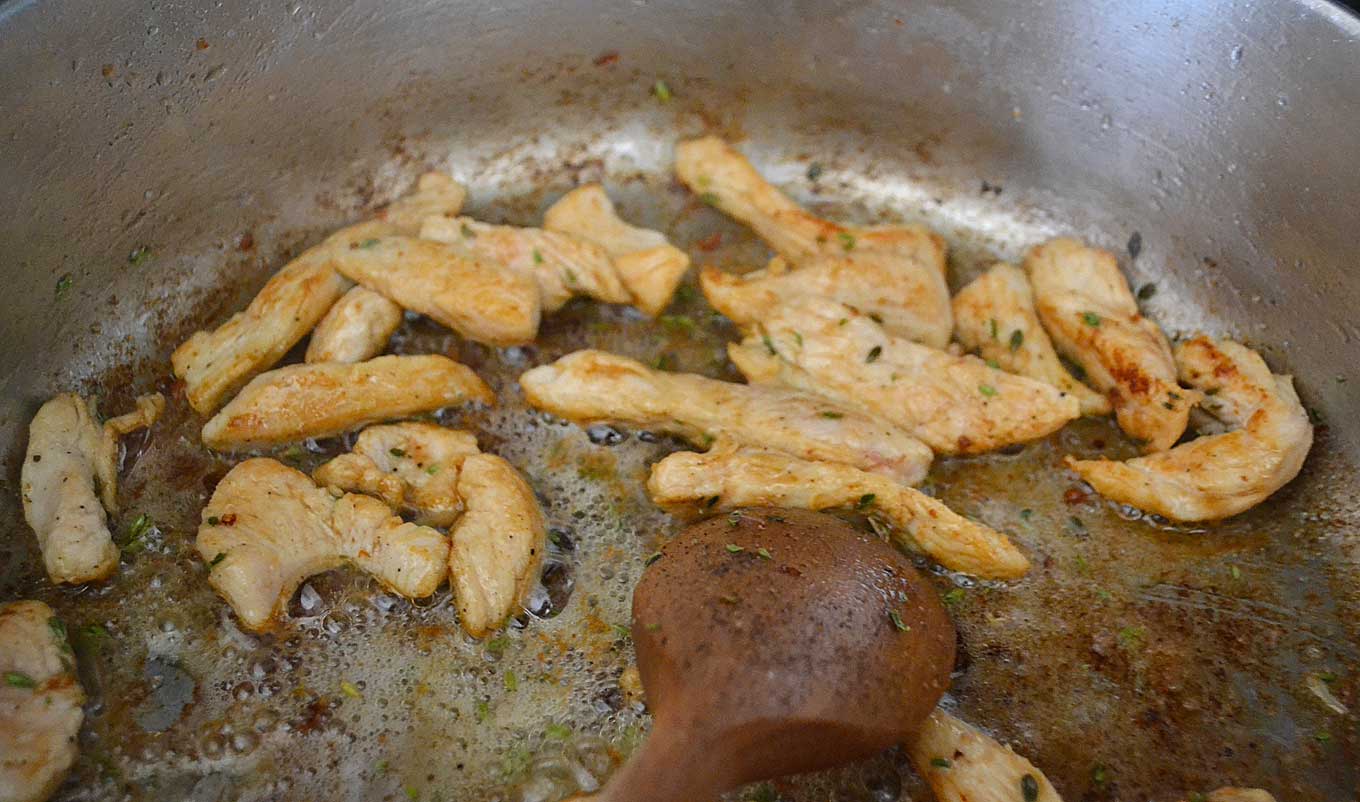
Cook – stirring occasionally – until they are lightly browned and remove from the pan place into a bowl.
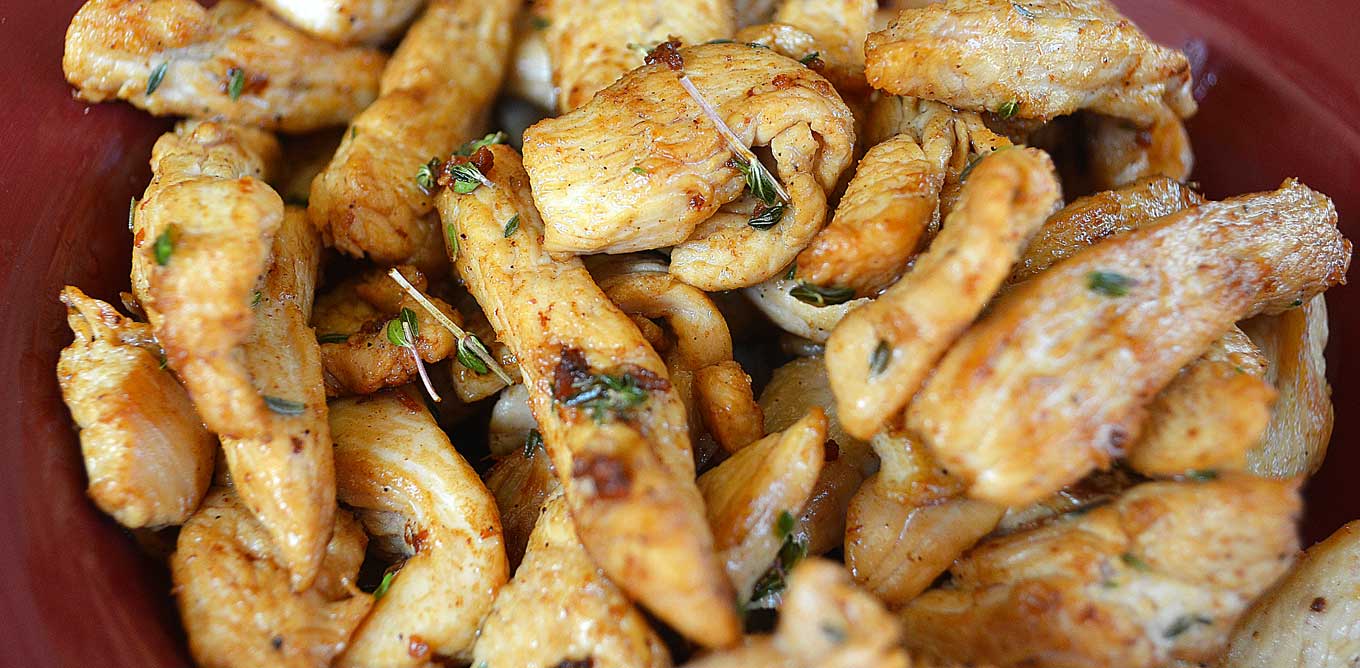
Add 1 tablespoon of unsalted butter to the pan and repeat the process with the second half of the chicken strips. Cook until they too turn a golden caramel color. Join them with the already cooked strips and cover them with aluminum foil to keep them warm.
Return the same shallow pot or dutch-oven to the flame and add the red pepper slices.
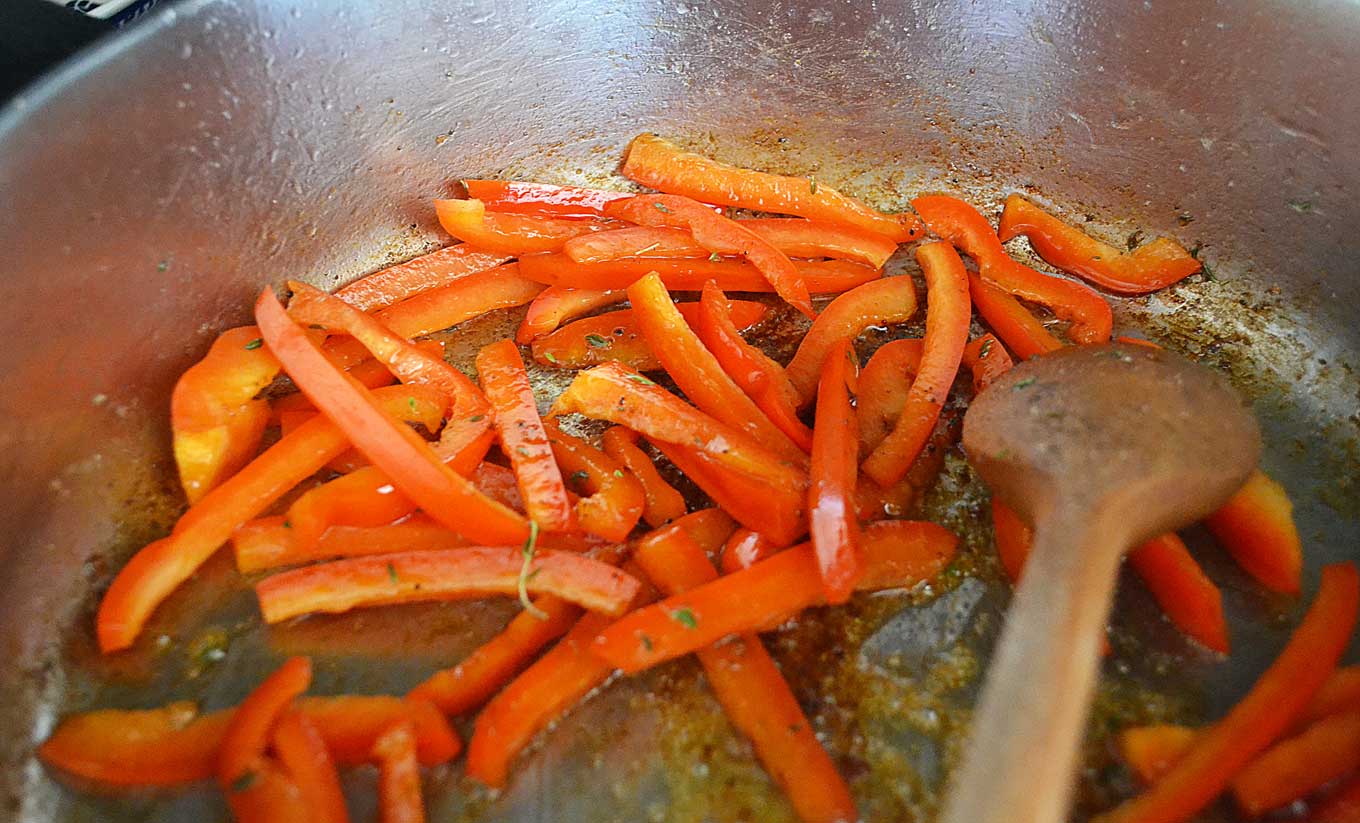
Add a little salt. Cook them on medium heat until they start to lose their firmness. Place them on top of the cooked chicken and cover with aluminum foil to keep warm.
In the same pot, heat 1 tablespoon olive oil and add 1 small grated Vidalia or white onion. Cook for 5 minutes or so on medium heat.
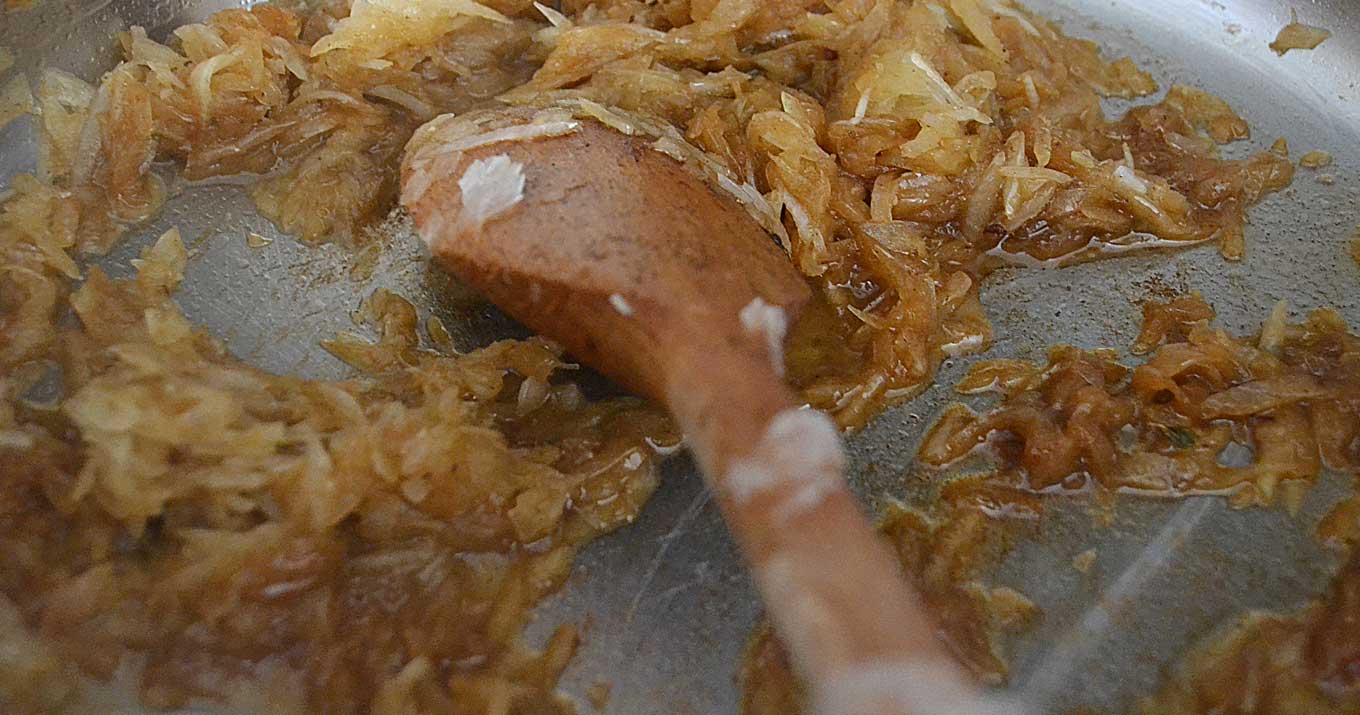
Then pour in 2 cups Arborio or Carneroli rice and stir until every grain is coated with oil and toast for a couple of minutes.
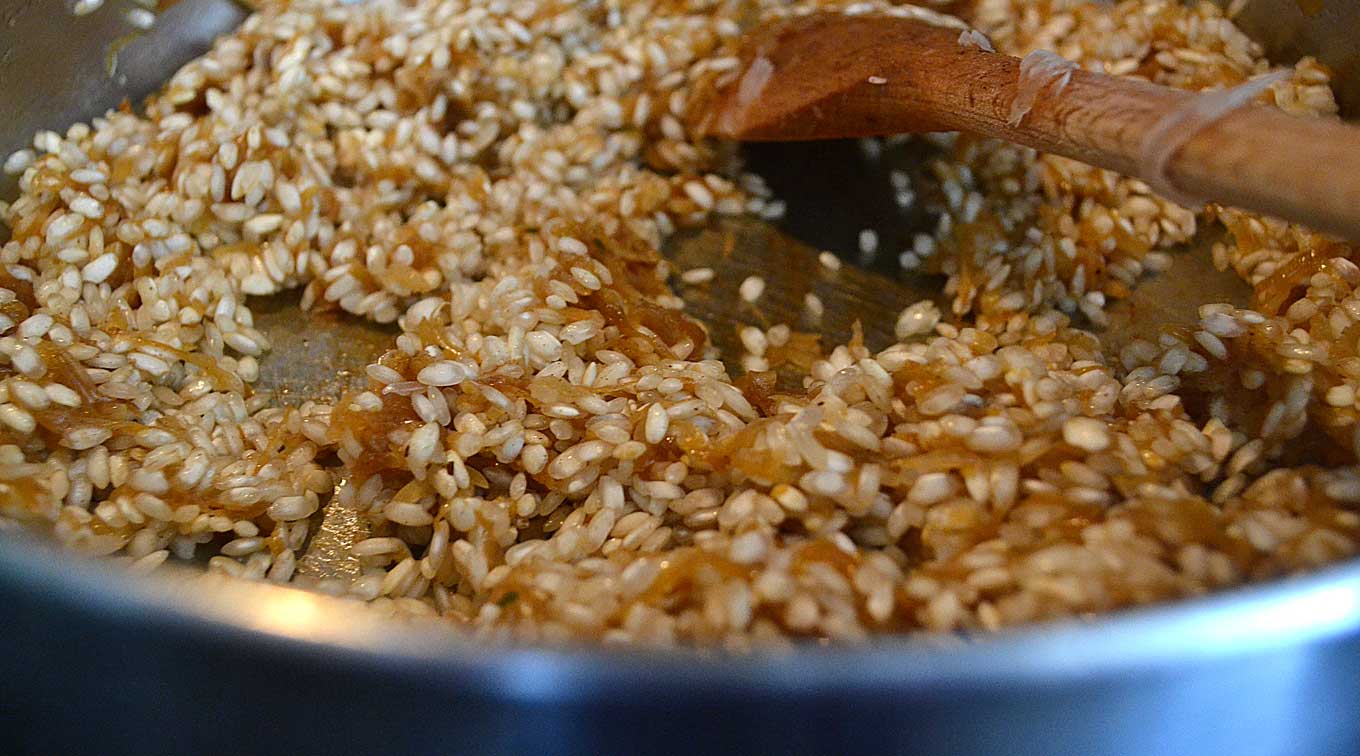
Doing this helps the rice to absorb the liquids slowly without becoming mushy.
Add 3/4 cup of dry white wine to deglaze the pan. Simmer on medium-high heat until the wine has completely reduced and the pan is nearly dry. Then start ladling the warm broth into the rice dish, one ladle at a time.
After about 10 – 12 minutes, start tasting the rice for seasoning and adjust if necessary by adding a little extra salt or pepper. Once you taste that satisfying chew, add 2 tablespoons of unsalted butter and 3/4 cup of freshly-grated Parmigiano-Reggiano.
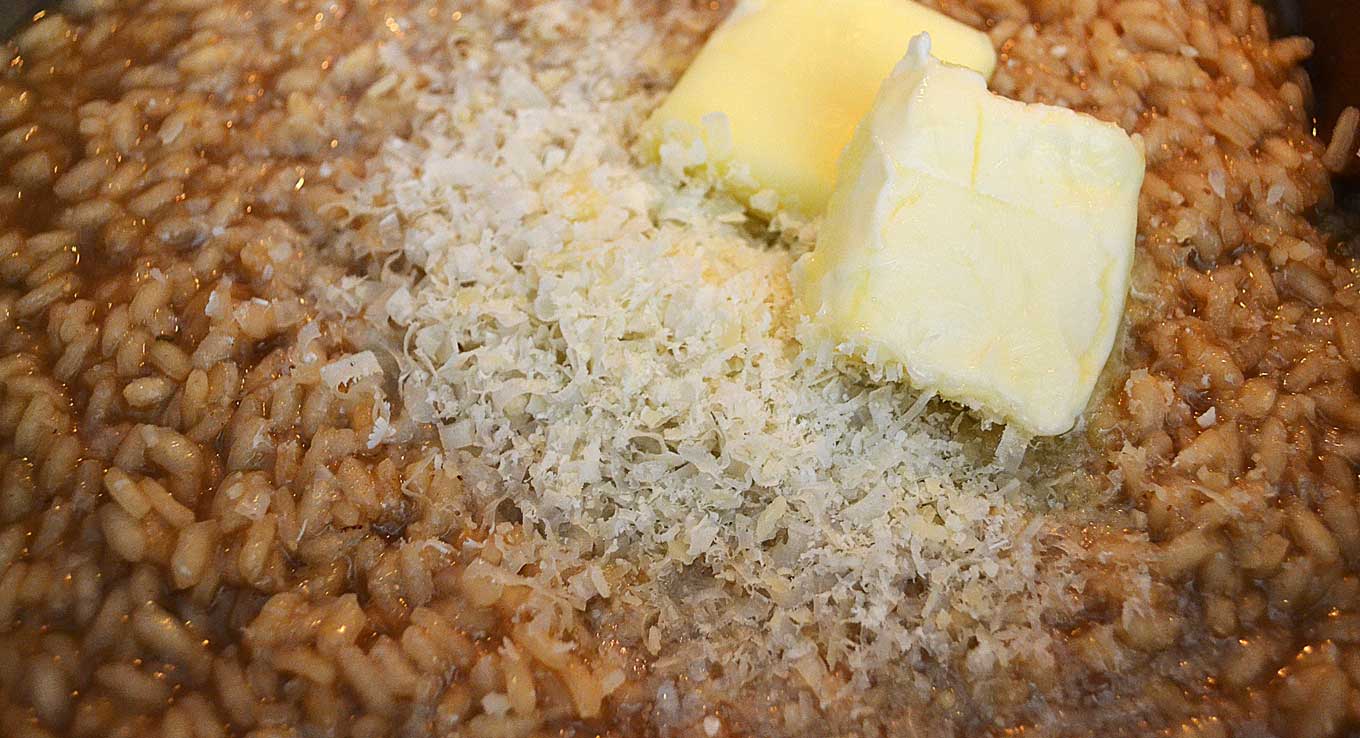
Thoroughly mix and add the cooked pepper and chicken back into the pot. Mix again, carefully, to make sure you’re not mushing up the cooked peppers.
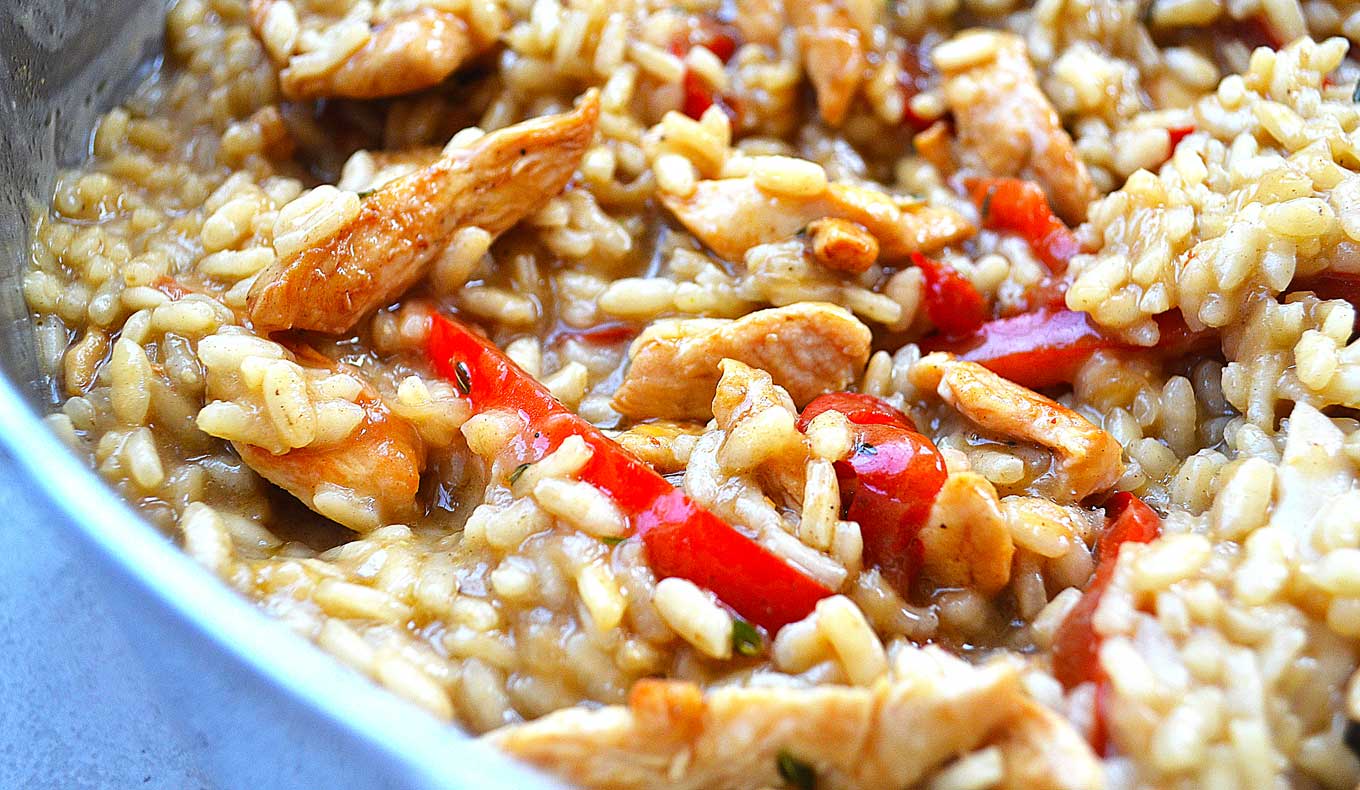
Allow the risotto to rest, covered with a kitchen towel, for 5 minutes. Doing this prevents all that steam, read water here, from accumulating on the top of the lid and then falling into the risotto when you lift the lid. I learned this from my sister Elena, who I believe got her cue from British cooking authority Delia Smith. Spoon into warmed bowls and top with a little additional Parmigiano-Reggiano. Serve immediately. Makes 8-10 servings.





Leave a Reply